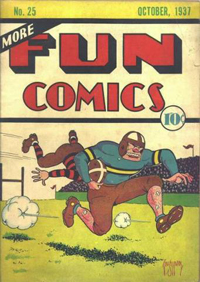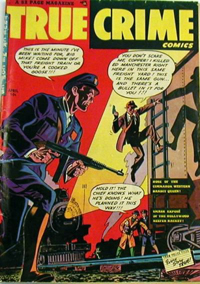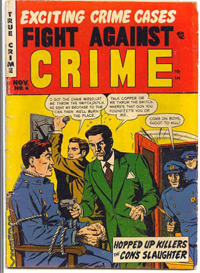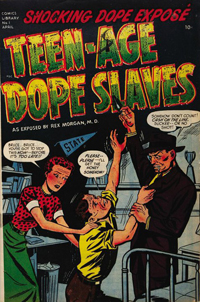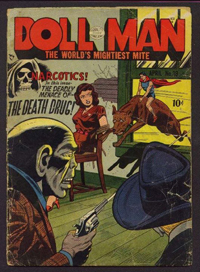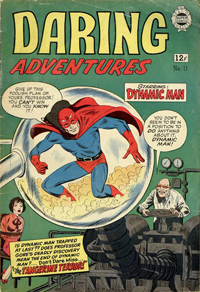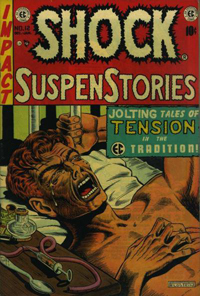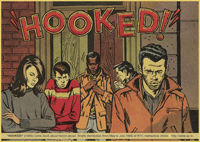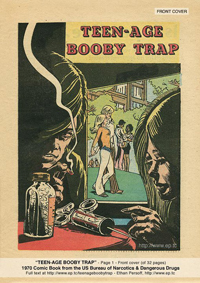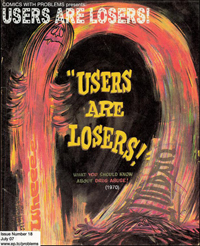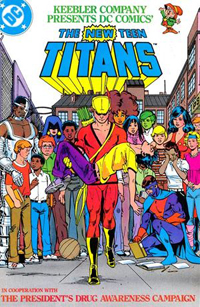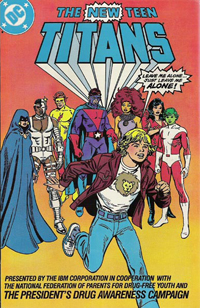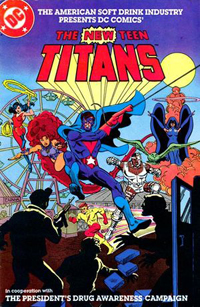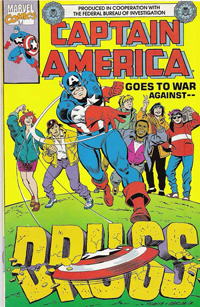Users Are Losers: A History Of Drugs In Comic Books
Back in the early days of developing the Weird Retro website, a Captain’s Blog post about the infamous Seduction of the Innocent (1954) by American psychiatrist Fredric Wertham, prompted me to dig through the Weird Retro facebook page archives. Buried in the archives are some wonderful examples of comic books produced before the voluntary Comics Code Authority was established. Many of them focused on the fears and paranoia of the period as regards drug use. Very much in the vein of that notorious cult public information and early exploitation movie Reefer Madness (1936). The archive holds some real gems, from the 1930s through to the 90s. And though not a comprehensive collection, it does reflect the variety of comic books produced on the subject of drugs and their perceived dangers at the time. So here you go, a brief jolly jaunt through the history of those strange and often surreal comic books. Often more surreal than the drugs they warned kids against. Rather than uploading all the scans here, I've added links to scans of all the comics available on the Weird Retro facebook page archive. (Click on the cover art for links.)
Latest Update: New comics and information added, that I've come across since I first wrote this article. Which was one of the very first to appear on the Weird Retro website. I have added scans here of some real gems of the genre, that aren't available on the Weird Retro facebook fan page.
Disclaimer (to any comic book 'geeks' reading this): This is a personal list, and not fully representative of this particular genre of comic books. If you'd like to comment and suggest others that should be on the list, then please go ahead. Would love to hear from you.
Latest Update: New comics and information added, that I've come across since I first wrote this article. Which was one of the very first to appear on the Weird Retro website. I have added scans here of some real gems of the genre, that aren't available on the Weird Retro facebook fan page.
Disclaimer (to any comic book 'geeks' reading this): This is a personal list, and not fully representative of this particular genre of comic books. If you'd like to comment and suggest others that should be on the list, then please go ahead. Would love to hear from you.
Pre-Code Comic Books!!! |
The CCA (Comics Code Authority) wasn't instigated until the 26th of October 1954.
|
|
More Fun Comics #25 published in October 1937 by Detective Comics.
The comic includes part 1 (4 pages only) of a story entitled "The Marijuana Racket", which is a Johnny Law adventure. It's considered that this could well be the first example in a comic book of an anti-drugs story in the style of Reefer Madness. The story starts out when a young marijuana addict shoots dead an innocent women outside of Johnny Law's window. The killer claims the "Snakes are chasing" him! Johnny Law goes on the hunt for a gang of marijuana racketeers: "Chief, I don't care how we do it, But we must stop this peddling of dope to kids! That kid that did the shooting this afternoon was a victim of marihuana." The artist is Will Ely, who only a year later worked on Action Comics #1, which was the first ever appearance of Superman. And the most expensive collectible comic in the world. |
|
True Crime Comics #5 published April 1949 by Magazine Village Inc.
The comic featured the now infamous 5 page story "I Was A Racket Girl". Tag-lined as a "True Crime Confession ... For The Hollywood Stars". In the story young would-be aspiring actress and her boyfriend get themselves involved in a marijuana selling racket. The story is very 'wordy', most of the panels are filled with text in attempt to tell the story in such a short number of pages. The publisher Magazine Village who produced True Crimes Comics, started in May 1947, and were designed and edited by Jack Cole. Cole was the cartoonist best known for creating the comedic superhero, Plastic Man, and his cartoons for Playboy magazine. The first issue (#2) featured Cole's "Murder, Morphine, and Me", the story of a young female drug addict who became involved with gangsters. It featured the now infamous needle in the eyeball panel. (The whole story is presented below.) The panel and the story were often cited as one of the reasons for the degradation of America's youth, as part of the back-slash against pre-code comic books. |
|
Fight Against Crime #4 published November 1951 by Story Comics Inc.
The comic features the story "Hopped-Up Killer", a 7 page story. Sold as a true crime story of Wallace Reagan, a small time punk with big ideas. Until the fateful day that his gun moll introduced him to the habit of bolstering his nerve with the evil drug Marihuana! Armed with his false substitute for courage, Reagan terrorized three states in an outbreak of vigorousness and crime unparalleled in modern police annals... The evil cigarettes made him into a cop killer. Considered one of the best of the early pre-code stories of reefer style madness, the story was originally published sometime in the 1930s. Like many publishers of the pre-code period, Story Comics Inc., published pulp comics with evocative titles like, Fight Against The Guilty, and Dark Mysteries. Much in the style and content that is often more fondly remembered of the cult comic publishers EC Comics. |
|
Mickey Mouse And The Medicine Man published 1951 by Walt Disney
A mini comic book was a promotional collectable from Wheaties brand cereal. Part of an 8 comic book set, that cost 15 cents plus a cereal box top. Mickey and Goofy discover ‘Peppo’ (speed). They sell the 'pick-me-up' drug in Africa. So wrong! As this twisted (speed is good) drug story sees Mickey drugging people; the 'white' American mouse exploiting Africans. |
|
Teen-Age Dope Slaves #1 published April 1952 by Comics Library
The Weird Retro archive features an original scan of the whole comic in colour. A rare find. Original art from this anti-drug crime classic featuring Rex Morgan, MD., and his drug fighting adventures is extremely rare and virtually non-existent anywhere else. It first appearing in strip form in the 1940s, and became one of the most controversial of the pre-code period. It was reprinted in black and white by Eclipse, in their volume of controversial pre-code comics, Teen-Aged Dope Slaves and Reform School Girls. In his book Seduction Of The Innocent, Dr Fredrick Wertham said "When adolescent drug addiction had finally come to public attention, it led to the publication of lurid new comic books devoted entirely to the subject, like the one with the title, Teen-Age Dope Slaves. This is nothing but another variety of crime comic of a particularly deplorable character." |
|
Doll Man #39 published April 1952 by Quality Comics
Doll Man was created by famous cartoonist Will Eisner. Doll Man's own self-titled series ran from 1941 until 1953, for 47 issues. The 10 page story was advertised on the cover as "Narcotics! The Deadly Menace Of... The Death Drug!" While the story refers to a "new drug", they were of course referring to marijuana! Eisner was better known for his comic book character The Spirit,whose series ran from 1940 until 1952, when he turned his hand to Doll Man. It was Eisner, that in the 1970s, decided to turn his attention and talents to longer storytelling forms. In 1978 in wrote A Contract with God and Other Tenement Stories, which was a early form of what would become known as "graphic novels". |
|
Daring Adventures #11 published 1953 by St. John Publications
Included here just one story from Daring Adventures #11, featuring Yankee Boy and his battle with Reefer King, entitled "Sorry - No Cigarettes Today". Yankee Boy battles Reefer King! A Cigarette salesman is talked into using his shop to sell reefers. A young boy (after smoking a reefer) becomes a robber. And thus Yankee Boy springs into action. As with many stories of the period, the 1953 publication was a reprint from an earlier appearance. The story first appeared in Yankee Comics #3, in 1941. Yankee Boy was an ordinary boy without superpowers, called Victor Martin. When he dons his costume he helps Inspector Foley fight crime and also teams up with Dandy and Johnny Rebel, his fellow Yankee Comics characters. Yankee Boy appeared briefly in a number of Golden Age comic books, apart from Yankee Comics, they included Dynamic Comics and Lucky Coyne. |
|
Shock SuspenStories #12 published December 1953 by EC Comics
Famous for their Tales from the Crypt series, EC Comics were a big target for Wertham and due to the introduction of the Comics Code Authority in 1954, had to curb much of the content in their comics they were most famous for among fans. The cover story entitled "The Monkey" is a truly scary 7 page story of the descent into heroin addiction. In 1956, EC Comics would fall foul of the Comics Code Authority, after they reprinted a pre-code story from 1953 called Judgment Day! The reason was that the comic featured an African-American as the central hero, and the story was an allegorical piece about segregation within a society. The battle EC Comics had, broke the company, and essentially brought an end to the much loved EC Comics publications. |
|
Hooked! published 1966 by the US Government Printing Office
In the 1960's and 70's there were a lot of comic books that preached a message. There were the Christian propaganda comic of Spire Comics, like There's A New World Coming (1974), and numerous right-wing Red Scare, Cold War comic books. Hooked! is a 1966 public information and propaganda comic book about heroin abuse. Briefly distributed between May to July 1966, at New York City methadone clinics. |
|
Teen-Age Booby Trap published 1970 by the US Justice Department
This is an incredible anti-drug comic book give-away produced by the now defunct Bureau of Narcotics & Dangerous Drugs (later to become the DEA) in 1970. This 32 page small-size booklet is full of propaganda and some far out "facts" man! The comic contains it all. Nearly all drugs are covered and totally over-the-top descriptions of their effects on the youth of America. Like the infamous anti-drugs PSA from 1971, Curious Alice, this comic book seems more drug-fuelled than anti-drugs. The style and artwork comes across as highly influenced by the counterculture of the late 60s, that by even the very early 70s had been appropriated into the mainstream. Which now in retrospect makes the whole thing even more hilarious. Many of the panels from Teen-Age Booby Trap have gone on to become iconic images appropriated by stoners. |
|
Users Are Losers published 1970 by the US Government
Users Are Losers is a rare find, as it was first published in small numbers, only distributed in a one state. First issued in 1970, by Educational Aids of Long Beach, California to middle and high school students, and later used as an anti-drugs teaching aid in the mid-70s. This 16 page public information pamphlet is packed with warnings and "facts" about the dangers of drug use. Panels from Users Are Losers, like Teen-Age Booby Trap have become iconic examples of over-the-top anti-drugs propaganda. The whole comic book was written, illustrated, pencilled, inked, etc., by John S. Sarver in a very unique style for comic books on this subject matter. |
|
The New Teen Titans Drug Awareness #1-3 1983 by DC Comics
Produced in cooperation with the President's Drugs Awareness Campaign, spearheaded by Nancy Reagan. Each edition had a corporate sponsor. Keebler, IBM and the America Soft Drinks Industry. They all featured interactive 4-page activity section and a "drug-free" declaration on the inside back cover. |
|
Captain America Goes To War Against Drugs 1990 by Marvel Comics and the FBI
After DC Comics got produced their anti-drugs comics, Marvel were bound to get in on the anti-drugs action too. The result, Captain America Goes To War Against Drugs, is their attempt at a comic book with a social message. It's all pretty cheesy stuff, as you'd expect from Captain America and Marvel of this era. Filled with scenes where Captain America beats up drug dealers and gives a kid a lecture at the end about the use of drugs. This one-shot piece of propaganda features some new villains, appropriate to the theme of the comic. We see the Drug Lords, called Crack, Ice, Ms Fix and Weed. Captain America seems like a perfect "Don't do drugs" spokesman until you remember that it was getting shot up with a "super soldier serum" that let him gain muscles the size of basketballs and become a superhero. In fact early Captain America comics got into trouble with the Comics Code Authority for his drug use. Bloody hypocrite! |

Judgment Day! EC Comics Against Comic Code Racism - In 1956, controversial comic book publisher an allegorical short story about segregation in the USA. It would be their last.
|
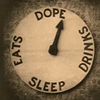
Stoned On Screen: Drugs In The Movies (Part 1) - Since the dawn of motion pictures, the portrayal of illegal drug use or references to drugs at all has been a controversial one in the United States.
|


